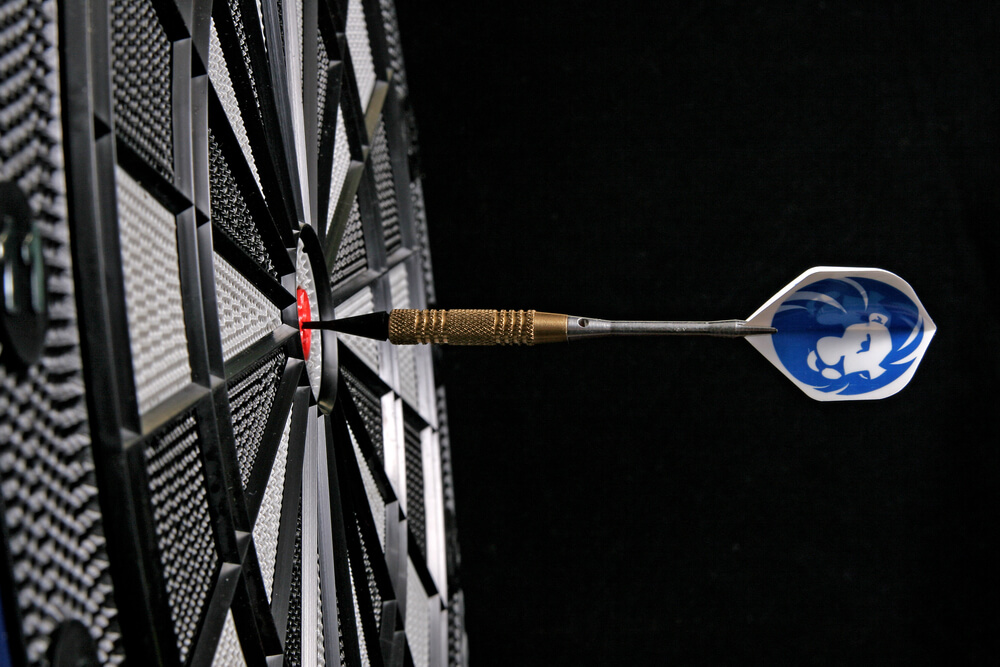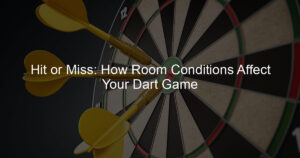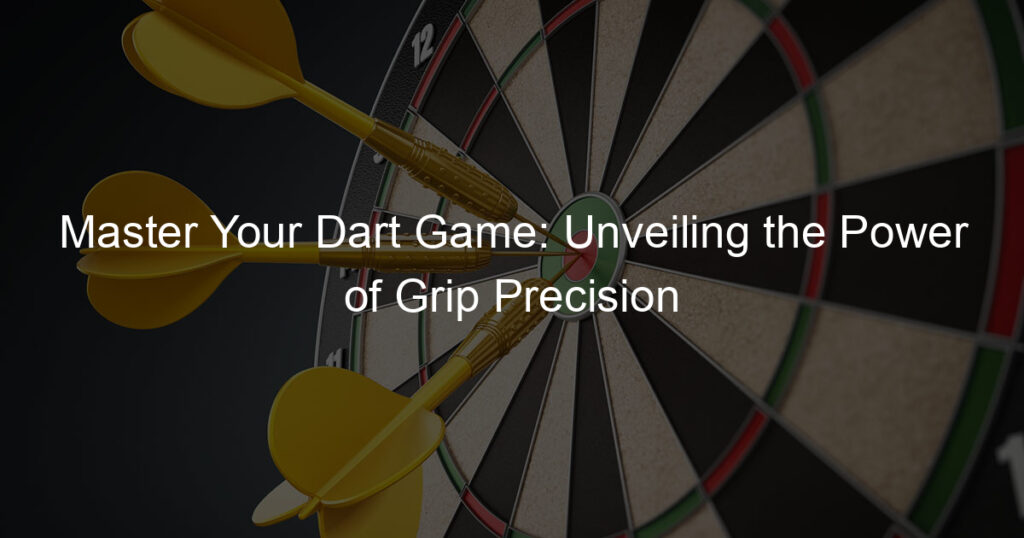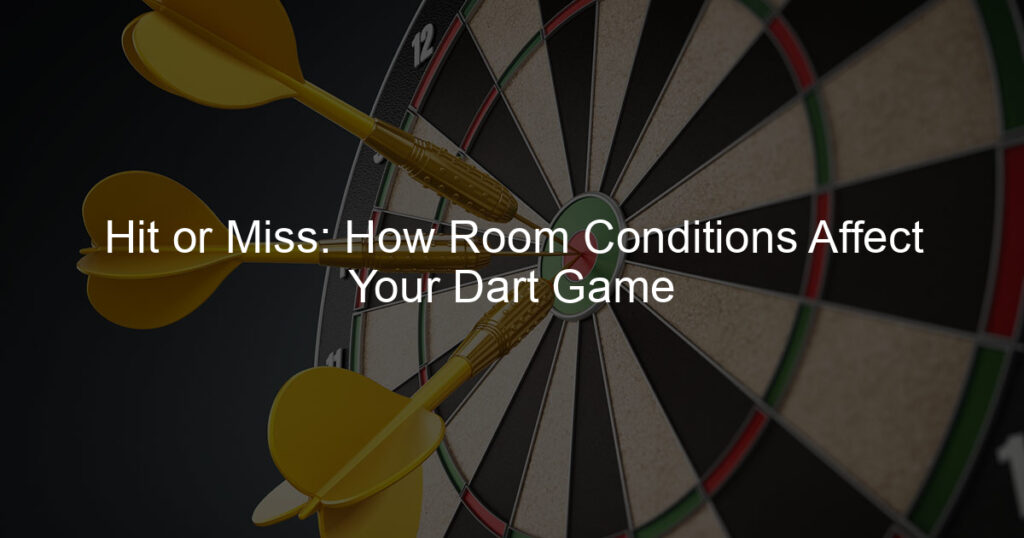Regardless of the variation, one key aspect of the game is the dartboard’s bullseye. How much is a bullseye worth in darts? This small, central target carries a significant point value and is crucial to understand if you want to excel in darts.
Darts is a popular game enjoyed by both casual players and professionals, with various scoring methods and rules depending on the specific game being played.
Understanding the value of a bullseye in darts can greatly impact your game strategy. Accurately aiming and hitting this target can make all the difference in your overall score.
In this article, we will explore how much a bullseye is worth in darts and how this knowledge can improve your gameplay.
Key Takeaways
- The bullseye has different point values for its inner and outer sections
- Accurate aiming and hitting the bullseye can greatly improve your overall score
- Understanding the bullseye’s worth is essential for strategizing and excelling in darts.
How Much Is A Bullseye Worth In Darts?
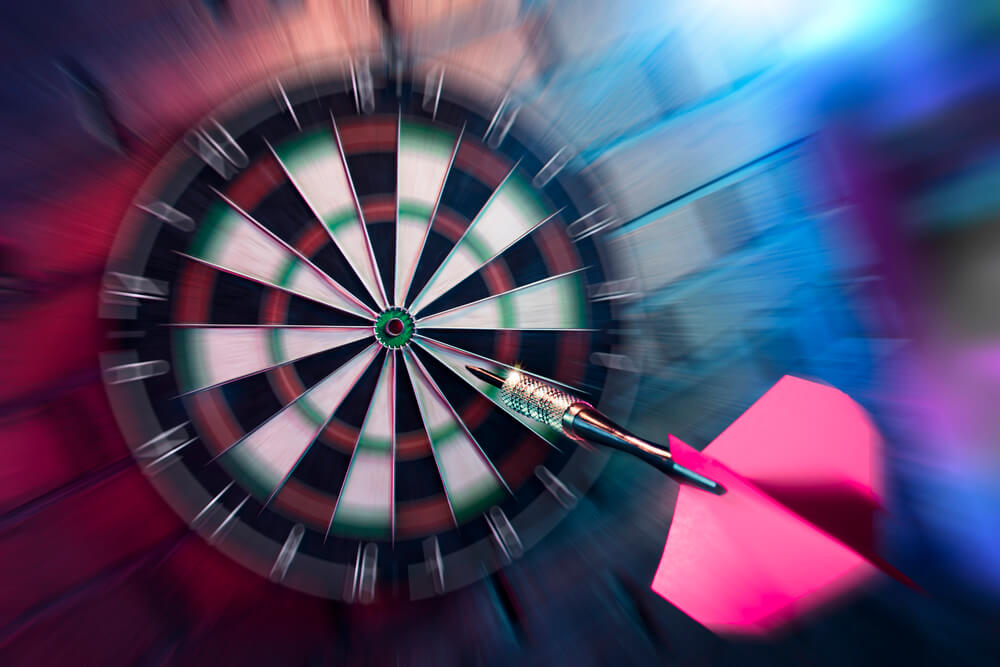
Darts is a popular sport that involves throwing small, pointed projectiles called darts at a round, numbered board called a dartboard.
To get started in the game of darts, you’ll need to understand the basic rules, the layout of the dartboard, and how to score points.
The dartboard is divided into 20 numbered sections, ranging from 1 to 20. Each section has a double ring on the outside and a triple ring in the middle.
These rings multiply the point value of the section they encircle. For example, hitting the double ring in the 20 section will earn you 40 points.
In the center of the dartboard, there are two special scoring areas: the outer bullseye, which is a green ring worth 25 points, and the inner bullseye, which is a red circle worth 50 points.
Hitting the bullseye accurately can be a challenging part of the game.
Darts can be played in various formats, but the most common ones are 301 and 501. In these games, each player starts with the respective number of points and aims to reduce their score to zero.
Players take turns to throw three darts, and the total points from each throw are subtracted from their current score.
The game ends when a player reaches zero, but the winning shot must be a double, meaning the player must land their final dart in the double ring of any number or the inner bullseye.
As a player, developing your throwing technique and consistency is essential to improve your scores. Pay attention to your grip, stance, follow-through, and practice regularly to build muscle memory.
Darts can be played casually or in competitive leagues, so it’s crucial to adapt your strategies and techniques to match the level of play you desire.
Now that you understand the game of darts better don’t hesitate to pick up a set of darts and start practicing. Enjoy the challenge, and, most importantly, have fun!
Structure Of A Dartboard
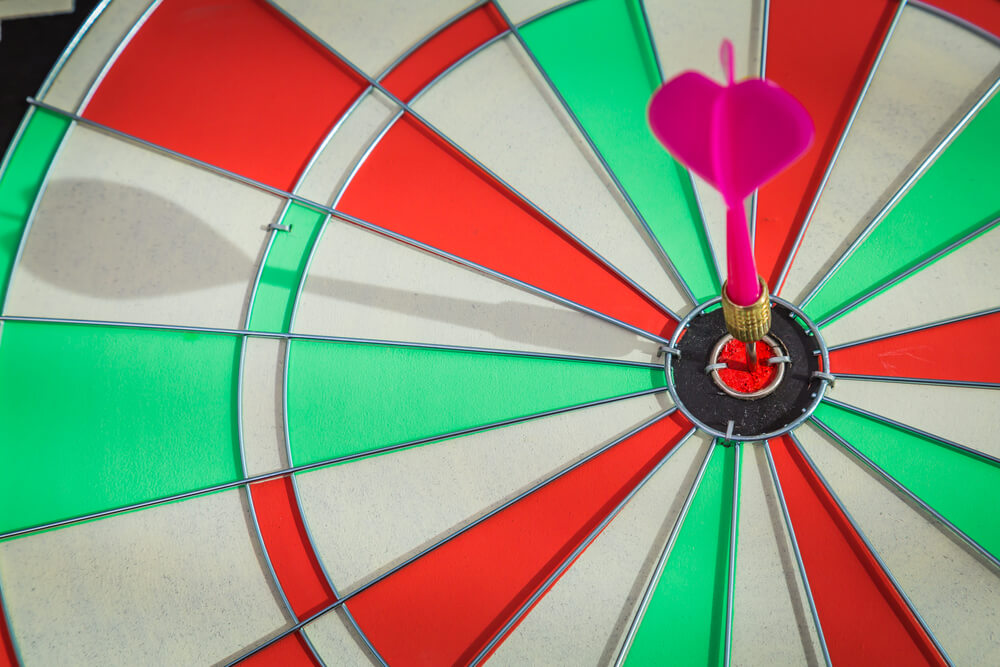
A standard dartboard is made up of several components, each with different point values. At the center of the dartboard, you will find the bullseye, which is divided into two parts: the inner bullseye and the outer bullseye.
The inner bullseye, or “double bull,” is the smaller red circle and is worth 50 points. Conversely, the outer bullseye, or “single bull,” is the larger green circle surrounding the inner bullseye and is worth 25 points.
Moving outward from the bullseye, the dartboard is segmented into 20 numbered sections, ranging from 1 to 20. These sections are further divided into single, double, and triple scoring areas.
The single scoring areas are the largest and cover most of the numbered sections, resulting in the face value of the respective section as points.
Meanwhile, the double-scoring zones are the narrow outer rings, and when hit, the point value of the section is doubled.
Likewise, the triple scoring zones are the narrow inner rings, multiplying the section’s point value by three when struck.
As you examine the dartboard, you’ll notice that the layout is not arbitrary; the numbers are strategically positioned to create a balance between high and low-scoring sections.
This design ensures that skilled players must be consistently accurate to achieve high scores, adding to the challenge and excitement of the game.
In summary, understanding the structure of a dartboard is essential for playing and mastering the game of darts.
Please familiarize yourself with the bullseye, as well as the numbered sections and their respective single, double, and triple scoring areas.
By comprehending these elements, you’ll not only grasp the game’s scoring system but also improve your strategic approach to target selection, elevating your skill level and enjoyment of the game.
Significance Of The Bullseye

Bullseye, the central target area on a dartboard, holds a special place in the game of darts. In this section, you will learn about the value of the bullseye and its significance in dart games.
The bullseye consists of two sections: the outer bull, worth 25 points, and the inner bull, worth 50 points. Hitting the bullseye is a challenging feat, even for seasoned dart players, and it takes precision, accuracy, and practice to develop the skill.
Understanding the value of a bullseye is essential when playing various dart games. In games like 501 and 301, the bullseye’s point value plays a vital role as you attempt to reduce your score to zero.
Hitting the bullseye can be a strategic move, as it may help you to reach a specific score or complete a specific checkout.
However, it is essential to note that hitting the bullseye is not always the best scoring option. For example, the highest scoring area on a dartboard is the triple 20, which is worth 60 points.
Targeting the Triple 20 may be more beneficial in games focused on overall points rather than hitting specific segments, such as Cricket or Around the Clock.
Nonetheless, the bullseye remains a crucial part of darts in terms of gameplay and symbolism. As a distinctive target, it continues to intrigue and challenge players, elevating the sport to a higher level of skill and strategy.
Scoring In Darts
![]()
In the game of darts, understanding the scoring system is essential to improve your skills and enjoy the game. When you aim for the dartboard, you’ll notice it has different sections corresponding to specific point values.
For instance, the bullseye consists of two concentric circles: the inner red circle is worth 50 points, and the outer green ring is worth 25 points.
As you play, remember that the dartboard also contains single, double, and triple sections for each numbered segment. Hitting a thin outer ring will double the segment’s value, while the thin inner ring grants triple points.
You can maximize your score each turn by strategically aiming for high-value segments and multipliers.
Keep in mind that a popular dart game, such as 501 or 301, allows each player to throw three darts per turn.
Your objective is to reduce your score to zero before your opponents, but you must do so by hitting a designated “double” segment on your final throw. This requirement adds an extra challenge and an element of strategy to the game.
When practicing, try to focus on consistency and accuracy for your throws, as these are important factors for scoring well in darts.
Familiarize yourself with the dartboard layout and establish a solid throwing technique to improve your game.
Remember that even experienced players continue learning and sharpening their skills, so don’t get discouraged if you don’t achieve high scores immediately.
A solid understanding of dartboard sections, point values, and game rules is crucial to becoming a better player. By recognizing the significance of the bullseye and other valuable targets, you can develop effective strategies and enhance your overall performance.
So grab your darts, step up to the line, and confidently aim for that high-scoring bullseye.
Bullseye Points Breakdown

When playing darts, understanding the value of a bullseye is essential to maximizing your score. In this section, we will break down the outer and inner bullseye points.
Outer Bullseye
The outer bullseye, also known as the outer green ring, is worth 25 points. Aiming for this area if you’re trying to rack up points quickly is crucial, as hitting it will significantly contribute to your overall score.
However, remember that it is not the highest-scoring area on the board, as some other sections may provide a more significant advantage.
For example, hitting triple 20 is worth 60 points, which is higher than scoring a hit on the outer bullseye.
Inner Bullseye
The inner bullseye, or the inner red circle, carries the highest value on a dartboard, worth 50 points. Naturally, this is an attractive target for players, but it’s also the smallest and most challenging area to hit.
Ensure you’re confident in your accuracy before attempting to aim for the inner bullseye.
Remember, consistency is key in darts, and sometimes scoring multiple lower-valued sections, such as triple 20, may prove to be a more viable strategy for amassing points in a game of darts.
Strategy Tips For Aiming Bullseye

Aiming for the bullseye can greatly improve your overall dart game. Here are some strategy tips to help you hit that 50-point inner bullseye more consistently:
1. Maintain a consistent stance: Start by finding a comfortable stance that provides stability. Your feet should be shoulder-width apart, with your dominant foot slightly forward.
Plant your non-dominant foot behind you for balance, and focus on keeping your posture straight and steady.
2. Ensure a proper grip: Hold the dart with a relaxed grip, using three or four fingers for better control. Your grip should be firm enough to keep the dart stable but not so tight that it causes tension in your hand.
Experiment with different grip styles to find the one that works best for you.
3. Align your dominant eye with the target: Determine which of your eyes is dominant, as it plays a crucial role in aiming. Close one eye at a time and point your finger at a distant object to figure this out.
Once you know your dominant eye, use it to align the dart with the bullseye while keeping your arm close to your body.
4. Develop a smooth, controlled throwing motion: From your shoulder to your wrist, ensure your entire arm moves fluidly without any jerky movements.
Keep your elbow relatively still and your arm at a 90-degree angle, releasing the dart as your forearm extends and your hand opens.
5. Follow through with your arm: After releasing the dart, move your arm forward in a natural extension of your throwing motion.
A good follow-through helps maintain accuracy and consistency while reducing the risk of overcompensation.
6. Practice consistently: Just like any other skill, consistent practice is key to improving your ability to hit the bullseye.
Set aside dedicated practice time to focus on refining your technique, and incorporate drills that target different areas of the dartboard to hone your precision.
By employing these strategies and dedicating time to practice, you’ll be well on your way to mastering the art of hitting the bullseye in darts.
Conclusion
In darts, the bullseye holds great significance due to its strategic importance and the points associated with it.
The bullseye is divided into two sections: the outer bull, which is worth 25 points, and the inner bull, worth 50 points. Hitting the innermost circle or the true bullseye will give you the highest points possible from a single dart throw.
Mastering the art of hitting the bullseye can make a significant difference in your gameplay. It’s crucial to understand that different dart games may assign different point values and rules to the bullseye.
For example, the bullseye counts as a double in the popular games of 501 and 301.
To improve your dart skills and increase your chances of hitting the bullseye, it’s essential to practice regularly. A consistent throwing technique also plays a vital role in perfecting your aim.
Though the triple 20 is technically worth more points, the bullseye’s allure and the satisfaction of hitting it are undeniable.
Ultimately, the value of a bullseye in darts can make or break a game. Take the time to understand the rules and develop your skill set.
You can confidently add impressive bullseye throws to your darting achievements with practice and persistence.
Frequently Asked Questions
What is the point value of a bullseye in darts?
The bullseye in darts has two separate scoring areas: the inner bullseye and the outer bull. The inner bullseye, also known as the red center, is worth 50 points. The green outer bullseye is worth 25 points.
How does scoring work in a game of darts?
In a standard game of darts, players throw three darts at the dartboard, aiming to hit high-scoring sections. Each numbered section on the dartboard represents a corresponding point value. There are also double and triple-score areas for each numbered section.
Your total score after each turn is calculated by adding up the points of the darts thrown. In games like 501 or 301, the goal is to reach zero points by subtracting your scores from a starting total.
What are the rules for hitting a bullseye in cricket darts?
The bullseye is treated differently in cricket darts than in games like 501 or 301. Instead of point values, the goal is to close out the designated numbers (15-20) and the bullseye by hitting them three times.
When a player hits the inner bullseye, it counts as two hits, while the outer bull counts as one. To win the game, you must close out all the numbers and the bullseye before your opponent does.
How is the bullseye score compared to other areas on a dartboard?
The inner bullseye is one of the highest-scoring areas on a dartboard, worth 50 points. However, some players consider the triple 20 (worth 60 points) to be more valuable because it has a higher maximum score potential.
The strategy often depends on the specific game being played and the skill level of the players involved.
What’s the difference between the inner and outer bullseye?
The inner bullseye, also known as the red center or the “50”, is worth 50 points when hit. It is smaller in size and more difficult to hit.
The outer bullseye, or the green ring surrounding the inner bullseye, is worth 25 points. It is larger in size and more accessible to hit than the inner bullseye, making it an attractive target for less skilled players.
Why is the triple 20 section sometimes considered more valuable than the bullseye?
The triple 20 section, worth 60 points when hit, can lead to higher scores for each throw than the inner bullseye, worth 50 points.
Therefore, skilled players often aim for the triple 20 to maximize their score potential, especially in games like 501 or 301.
However, it’s essential to remember that different games have different scoring strategies, and the bullseye may be the primary focus in some matches.

